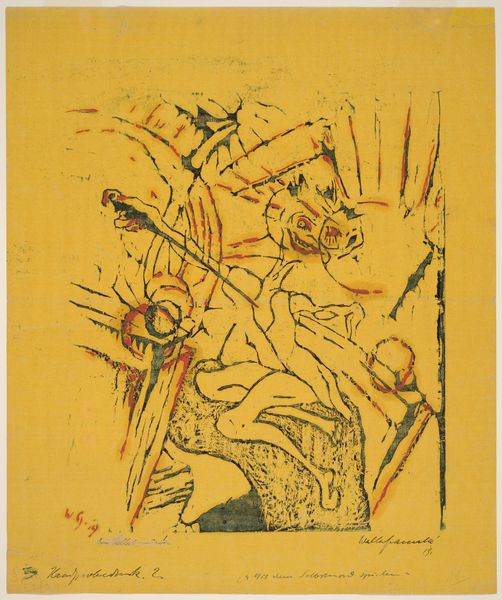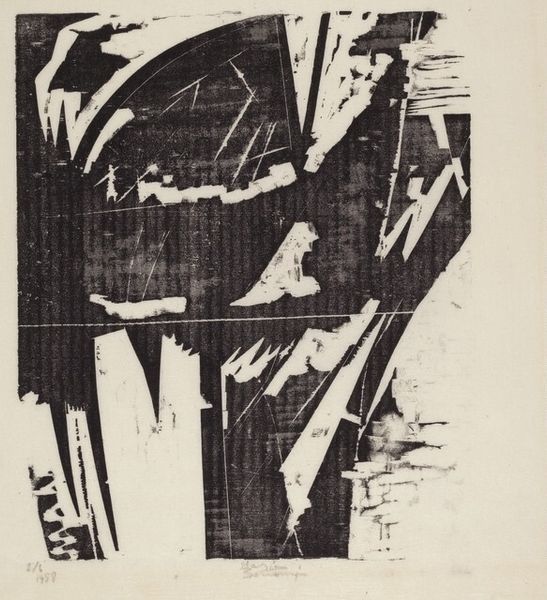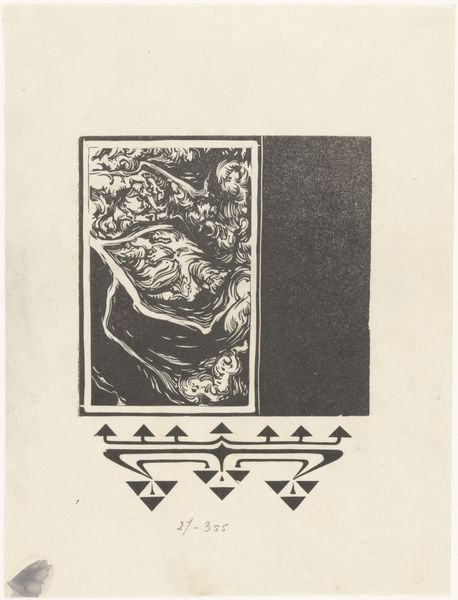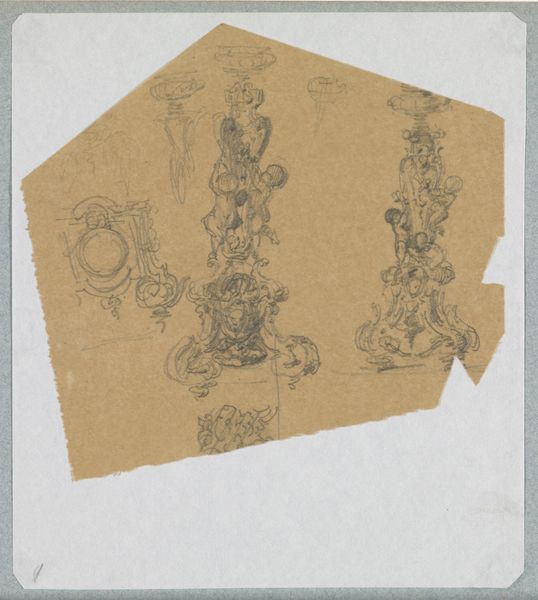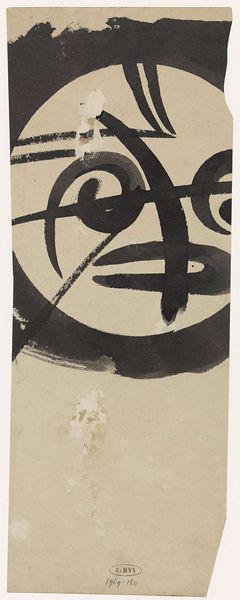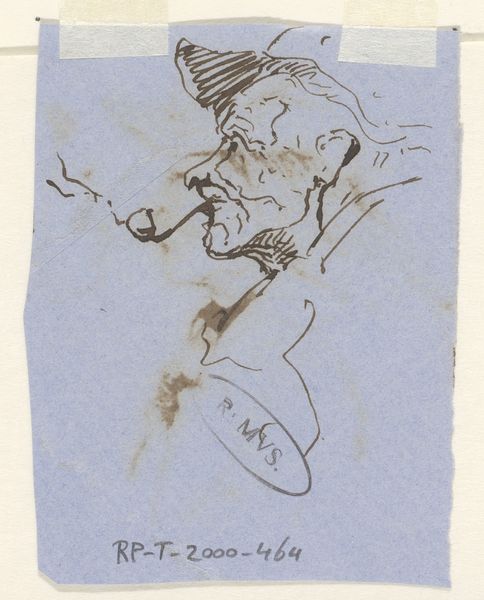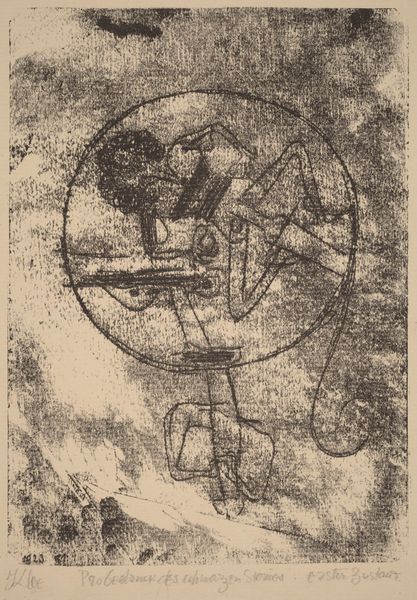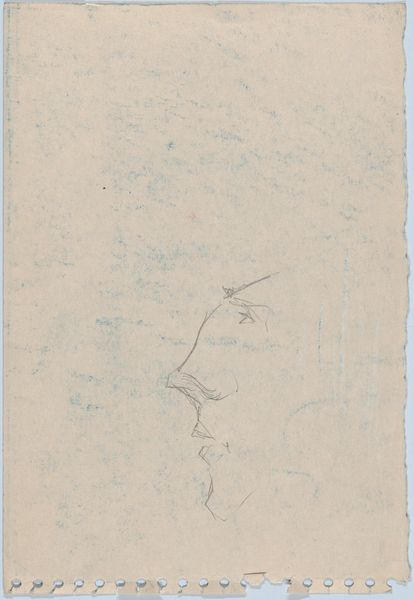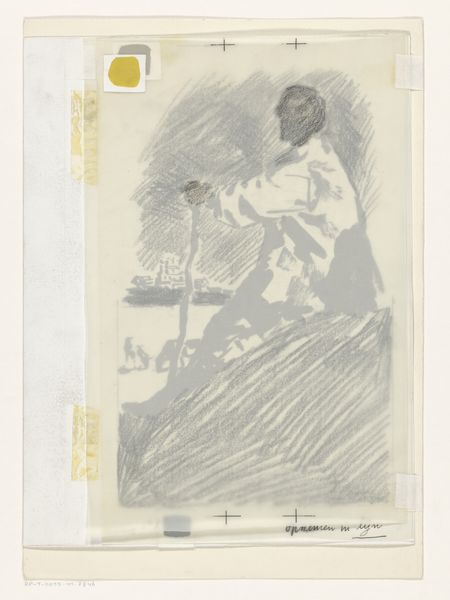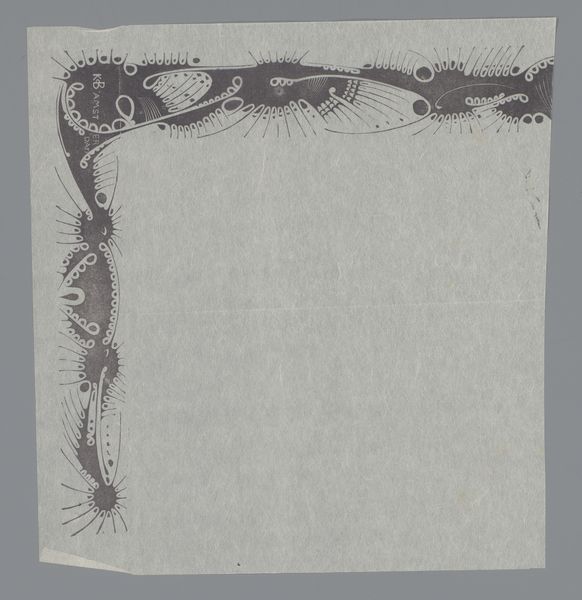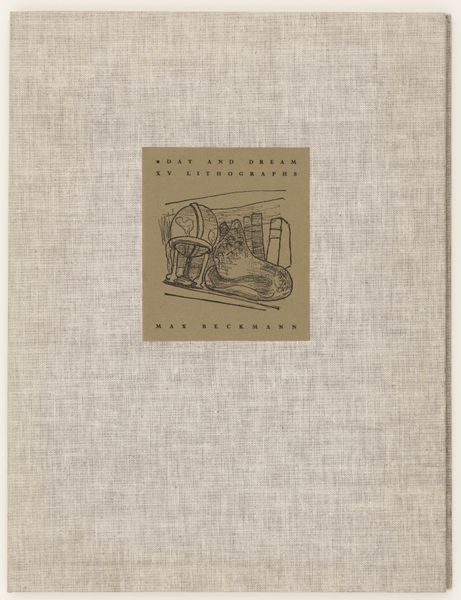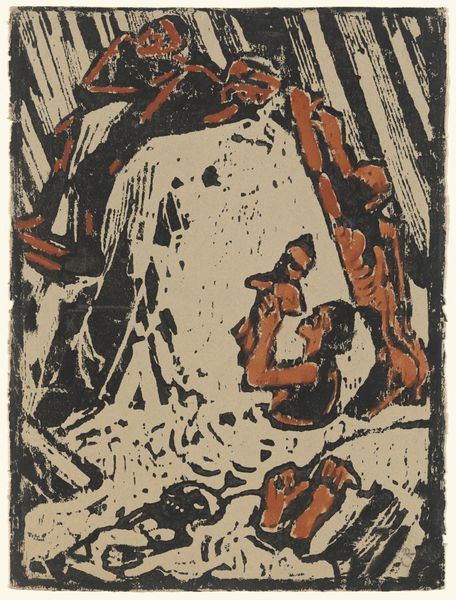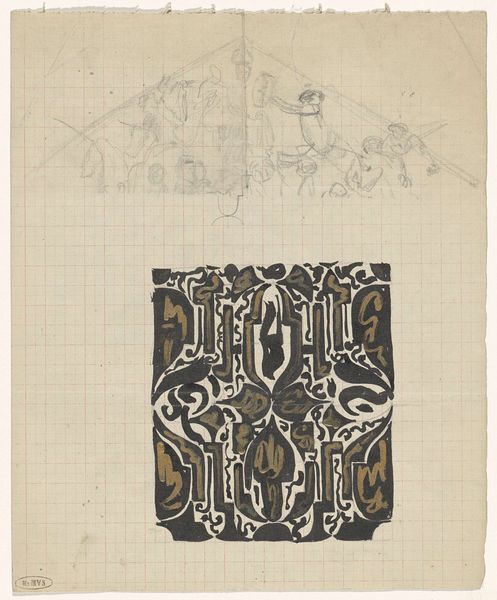
drawing, ink
#
drawing
#
blue ink drawing
#
landscape
#
figuration
#
ink
#
symbolism
Dimensions: height 205 mm, width 185 mm
Copyright: Rijks Museum: Open Domain
Curator: Today we're looking at "Ars longa, vita brevis," a drawing created between 1871 and 1890, by Pieter de Josselin de Jong, held at the Rijksmuseum. It’s rendered in blue ink. What's your immediate response? Editor: I’m struck by the sense of restless energy, even chaos, within a very tight compositional structure. The blue ink gives a melancholic tone, yet there’s a definite movement from the various compositional elements swirling around the page. Curator: Precisely. De Jong masterfully juxtaposes the foreground figure with the looming, shadowy architecture in the background. Consider the balance achieved solely through the ink's tonal variation. Semiotically, the architectural drawings contrast with the fleshy treatment of the reclining figure and the visual tension, inviting questions of permanence and the ephemeral nature of human life. Editor: Interesting perspective! My view veers more toward the tactile aspect—the materiality of the ink and paper, particularly how it's used to define texture and shadow. I think it suggests the rapid and skillful process of creation involved, particularly the mark-making and its labor-intensive quality. I wonder about the type of pen nib he would have used, the paper grain, the act of repeated mark-making that would have gradually deepened the saturation of the colour. Curator: Ah, but consider the border; a decorative framing motif around this interior world. Isn't it interesting that the pattern has this sort of architectural geometry. The symbolism within this drawing also offers depth, contrasting fleeting moments, represented by the person in the image, against a testament of life, long lived. Editor: It’s as if the paper itself—the raw material, with all the time and steps involved in its production and decoration – plays a vital role, underlining a crucial relationship with the ephemeral, while the making embodies permanence and a social structure from that era in terms of consumption and class. Curator: I see your point. Perhaps the true value resides not in these distinctions, but within their intrinsic connections and subtle interdependencies in creating and communicating this thought-provoking symbolic piece. Editor: An intersection then between thought and form, medium and maker; revealing the tangible dimensions through which it manifests. Thank you for your input.
Comments
No comments
Be the first to comment and join the conversation on the ultimate creative platform.
